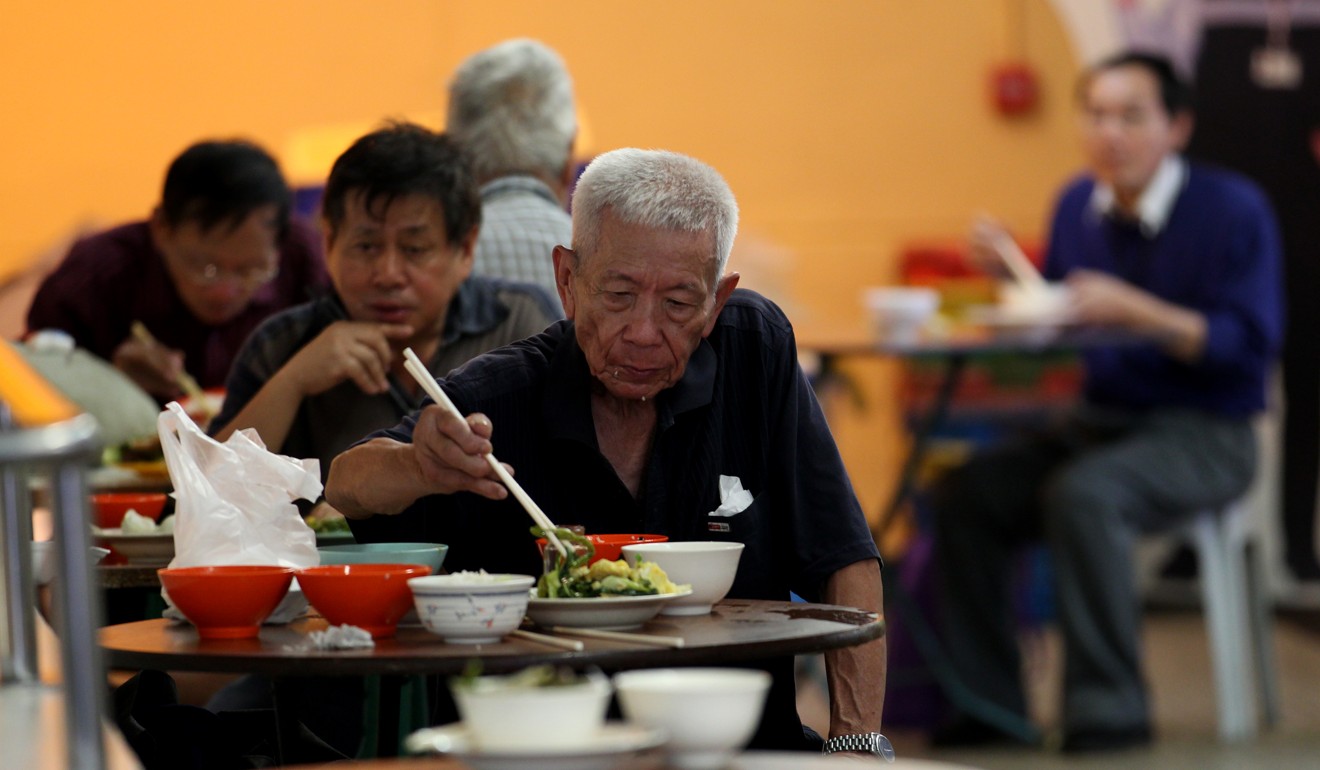
Explain This: what does it mean to be poor in Hong Kong, and how many people live in poverty?
After study reveals more than 70,000 families in the city spend less than HK$15 per person on each meal, Explain This looks at the numbers on poverty, who exactly the poor are, and what can be done about the problem

One of the starkest demonstrations of inequality in Hong Kong can be seen on city pavements where luxury shops and elderly women collecting scrap cardboard coexist. Many tend to ignore the fact that beyond the glitzy skyline, Asia’s self-proclaimed “world city” is plagued with depressing poverty and a worsening wealth gap, with the richest families earning up to 29 times more than the poorest. Recent data reveals that more than 70,000 families survive on less than HK$15 a meal per person.
How many people are classed as poor in Hong Kong?
The latest official figures showed 1.34 million people were living below the poverty line in 2015, out of a total population of 7.34 million. That figure was 20,000 more than the year before and the highest since 2009. The poverty rate stood at 19.7 per cent of the population, a study released by the government in October last year found.
In 2015 authorities set the poverty line for one-person households at HK$3,800 per month, and HK$8,800 for two-person homes.

A study released this month by the Hong Kong Council of Social Service showed that more than 40 per cent of low-income households in Hong Kong – about 71,000 people – spent less than HK$15 on average on each meal.
According to social workers, low-income households are often forced to cut their expenditure on food to cope with rising rents. A “coffin home”, for instance, so called for their minuscule size, might cost almost HK$2,000 a month.
The poverty line has been drawn at half the city’s median household income, with those below it considered poor.
Who are the poor in Hong Kong?
One in three Hongkongers aged 65 or above were living in poverty, according to the government report published last year. The elderly are one of the most vulnerable groups in the city.
About 477,500 people were labelled as “working poor”.
Another study, published by Oxfam in August last year, showed that more than 190,000 children aged 15 years old or below lived in poverty.

“Poverty in Hong Kong is still a very serious issue, especially for some disadvantaged groups, such as ethnic minorities, and particularly their kids,” Wong Shek-hung, Oxfam Hong Kong programme manager, said. She cited integration problems due to a lack of Cantonese language skills as a major issue.
Along with ethnic minorities, Wong said women were suffering the most.
“They have to take care of their families and work to supplement their household’s income,” she said. “Because of that they engage in casual employment and are often not protected by the employment ordinance.”
Wong urged a review of legislation to address this issue.
Sham Shui Po, Kwun Tong and Wong Tai Sin – all in Kowloon – were among the most impoverished areas of the city.

How wide is the wealth gap?
The wealthiest families in Hong Kong earn 29 times more than the poorest, the study by Oxfam found.
“In 2015, the median monthly household income of the top decile of earners was HK$100,000, while that of the lowest decile was only HK$3,500,” a report on the study said, concluding that the poorest would need to work for 2.4 years to earn as much as the wealthiest earned in a single month.
What can be done about it?
The government last year launched the Low-income Working Family Allowance to subsidise the earnings of the poor. However, the scheme has been targeted by critics for what they said were harsh criteria, complicated application procedures and a lack of language support for ethnic minorities.
The business director of the Council of Social Service, Anthony Wong, has suggested poor residents renting flats in the private sector should receive greater support.
“The quantity of public rental housing must be increased” to accommodate these people, he said, noting that families had to wait an average of five years for public housing.

Oxfam’s Wong called for greater public spending on social welfare, for which estimated expenditure for the 2016-17 financial year was HK$66.2 billion, accounting for 19 per cent of the government budget.
“We hope the government can do more in terms of poverty alleviation, presenting more concrete proposals, particularly for the elderly, casual workers and ethnic minorities,” she said.
Support groups have called on the government to review the city’s statutory minimum wage annually, rather than every two years. There have also been calls to extend the city’s retirement protection system to include elderly residents who live with their children.
Explain This takes a closer look at topical issues or news of the moment and presents it in easy-to-understand summaries